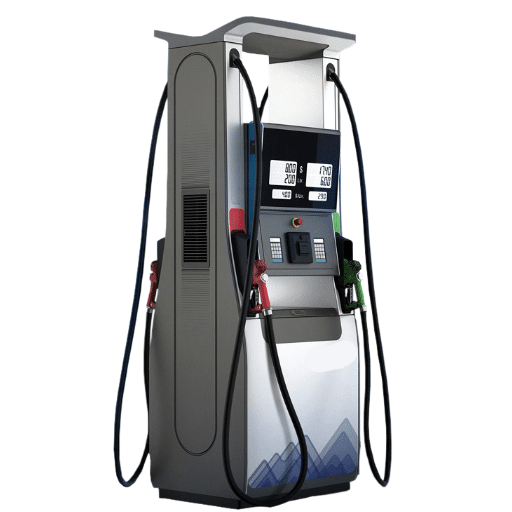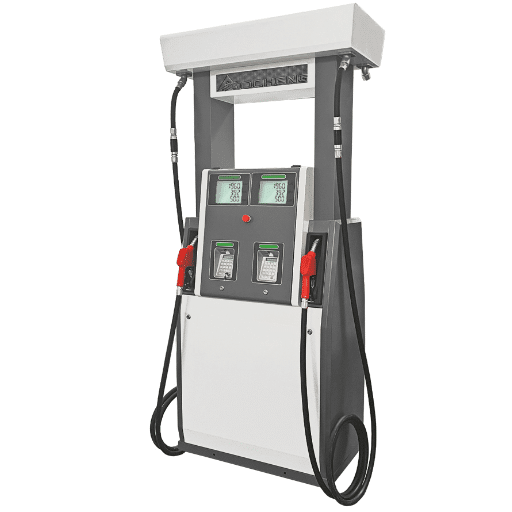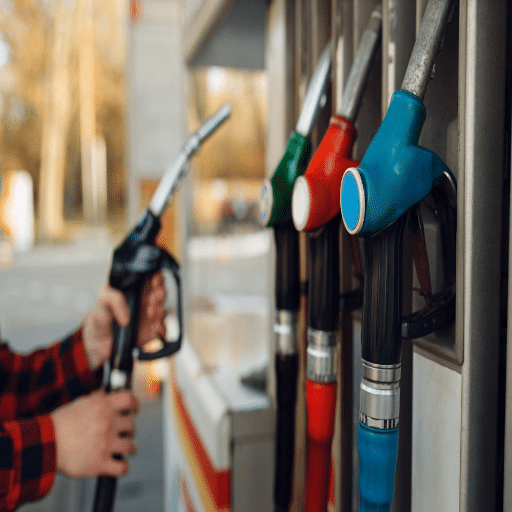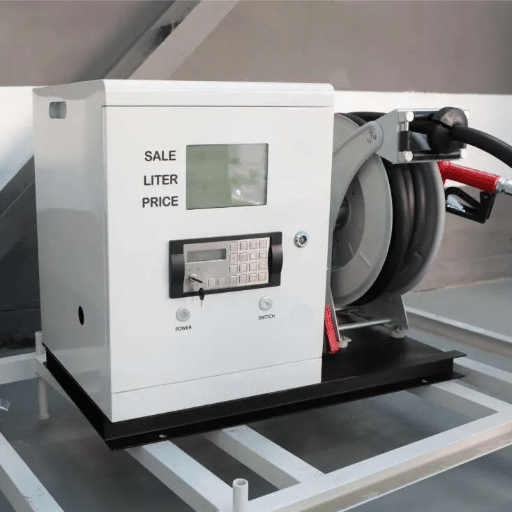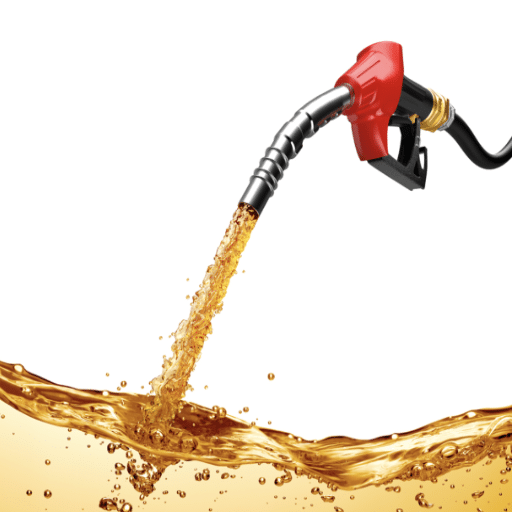A gas station is generally considered a complex yet gratifying venture, involving the skillful planning of regulatory compliance, construction, and operation. Whether an entrepreneur wants to enter the fuel industry or is simply curious about the significant efforts that go into setting up these facilities for the public, this guide walks you through each step. From selecting the ideal location to establishing effective safety protocols, we inform you on all aspects—from concept to completion. Now, put on the thinking cap and get deep into the blueprint of one of the mainstays of modern infrastructure.
Understanding the Gas Station Business
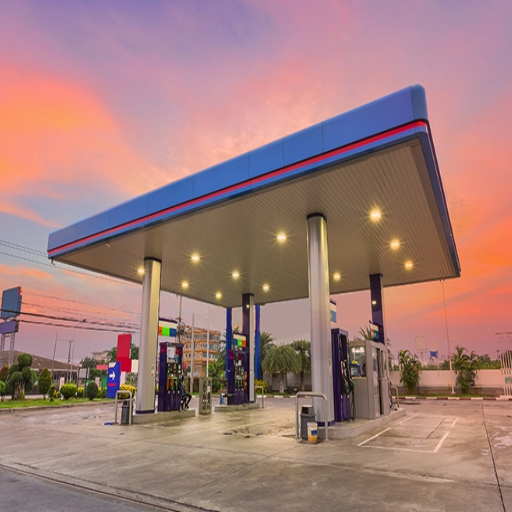
The gas station business is vital for the transportation and energy sectors, as it serves as the central location for fueling vehicles. Some of the key success factors include location, fuel availability, price, and customer service. A gas station might also generate some revenue through its convenience store, selling snacks, drinks, newspapers, and other essentials. The operator is highly regulated by safety and environmental laws to avoid risks and maintain safe operations. All in all, the business thrives in serving the daily needs of consumers while maintaining efficiency and compliance.
Overview of the Gas Station Industry
Although a gas station is a vital part of the global economy, grossing billions of dollars annually, the U.S. gas station market alone is worth approximately $138 billion in 2023, according to recent data. There are over 145,000 convenience stores across the country, with almost 80% of them selling fuel. A total of 900,000 workers are employed by the industry, underscoring its significant contribution to the job market.
A crucial trend shaping the industry is the increasing emphasis on sustainability and alternative energy options. Many stations have begun to embrace this concept by installing EV charging infrastructures and considering biofuels. Furthermore, with the introduction of innovations in technology, operations have undergone significant transformations, with many gas stations opting to install payment automation and utilize mobile apps to enhance customer convenience.
Economic fluctuations and fuel price volatility have hitherto posed challenges for the sector. One of the sectors of diversification being pursued by the operators of these retail outlets is non-fuel sales, which significantly contribute to profits. Convenience stores attached to gas stations now earn approximately 35% of their revenues from prepared foods, drinks, and essential groceries.
In toto, the gas station industry is transforming in line with shifts in consumer preferences and environmental demands, all while remaining at the heart of modern infrastructure.
Types of Filling Stations
Since filling stations have adapted to meet energy needs and consumer preferences, they have evolved to offer a wide range of fuels and services. Listed below are some main types of filling stations and their basic characteristics:
Gasoline and Diesel Stations-Essentially a Fuel-Only Station: Gasoline and diesel fuels stand as their main offer in these stations, being the most common form of a service station globally and usually housed with convenience stores that sell snacks, beverages, and essential items. There are currently more than 145,000 gas stations in the U.S., with many undergoing additions such as car washing, gas filling, and air pumping.
Electric Vehicle Charging Stations: Electric vehicles are being widely adopted as a form of mass transportation, and charging stations have become a popular choice for car owners. These charging points provided to EV owners include charging options, with two major types being Level 2 chargers for slow, overnight charging and DC fast chargers for fast refueling. By 2023, coupled with more than 140,000 public charging ports in the U.S., the rise of electric vehicles has been relieved and fossil fuel dependency curbed.
Hydrogen Fueling Stations: Hydrogen stations fuel vehicles that run on hydrogen fuel cells, viewed as an environmentally friendly alternative to traditional fuels. Their availability is localized and even fraught within countries such as the United States. The hydrogen infrastructure, however, continues spreading in states like California and parts of Europe. For instance, as of 2023, there are more than 60 operating hydrogen fueling stations in California, a sign of developments in this particular sector.
Alternative Fuel Stations: These stations dispense alternative fuels, including compressed natural gas (CNG), liquefied petroleum gas (LPG), and biofuels such as ethanol and biodiesel. Such measures are popular in areas that aim to reduce their carbon footprint. Brazil, for example, has quite an extensive network of ethanol pumps, as ethanol fuel is one of the primary alternative fuels in the country.
Mixed-Use and Hybrid Stations: Many modern stations combine fuel types to cater to a range of consumer needs. Hybrid stations may offer gasoline sales in addition to EV chargers or hydrogen fueling. Integrated stations like these are now more common in cities where accommodating the fragmented vehicular technology is essential.
The diversification of filling stations reflects the global shift toward clean and efficient energy sources, driving innovation and reorganizing the fuel industry.
Steps to Opening a Gas Station

Research and Planning: Market research is your first task, in which you identify target locations, analyze competition, and study local demand. Based on varied consumer needs, determine the types of fuel and services you’d like to provide (e.g., convenience store, EV chargers).
Secure Funding: All these elements will be captured in your business plan, along with a statement outlining the startup capital required. Therefore, property purchase, construction, licenses, and a first load of fuel must be well calculated. You will then seek out financing through personal sources, banks, or investors.
Obtain Permits and Licenses: Comply with local, state, and federal regulations. Keep track of permits for fuel/storage, zoning clearance, environmental impact assessment, and business licenses.
Select Fuel Suppliers: The fuel suppliers you want to work with are those whose business interests align with yours. Discuss the conditions for the timely and cost-effective delivery of fuel.
Design and Build the Station: Collaborate with skilled contractors to develop a safe and efficient design. Based on your business model, set up pumps, storage tanks, signage, and other facilities such as EV charging stations or even a typical store.
Hiring and Training Staff: Through your recruiting effort, seek employees who can function as cashiers, maintenance workers, and managers. Ensure that staff receive training whenever applicable, mainly regarding safety and customer service.
Marketing and Promotion: Implement a comprehensive marketing strategy to attract customers, incorporating signage, grand opening promotions, and targeted social media campaigns. Ensure that you promote special services that may include alternative fuels or low prices.
Site Opening and Operation: Establish high standards for safety, cleanliness, and customer service to generate goodwill and repeat business for the station. Before the opening, ensure that all equipment is functioning correctly with the systems.
Follow all these steps, and your gas station will become a successful one, tailored to meet the present-day fuel needs.
Researching the Market
Market research is exceptionally vital when setting up a gas station business. It starts with identifying the target audience in the chosen location. This entails an analysis of demographic details, such as population density, average income levels, and typical commuting patterns. For instance, since urban areas with high traffic volumes tend to offer a better guarantee of consistent fuel sales, suburbs might shift their focus to convenience and other amenities, such as car washes or simple retail shops.
Moreover, research local competition to comprehend their pricing strategies, services offered, and customer preferences. Stay informed about fuel trends, such as the rising demand for alternative energy sources, including electric vehicle (EV) charging stations and biodiesel facilities. Recent industry insights forecast the demand for EV charging stations in the United States to witness a CAGR of above 28% through 2032, depicting a direct market trend on the side of sustainable energy.
Lastly, evaluate the potential station locations. The site should provide good visibility and be accessible and suitable for zoning purposes. It can increase customer traffic when located near highways, commercial centers, or residential areas. These insights provide a robust foundation for informed decision-making, enabling meeting current market demand and anticipating future trends that ensure long-term prospects.
Choosing a Location
To locate a site for your filling station, it is good to consider the present demographic and traffic flow data. Places that experience consistent vehicular traffic have the most significant potential for customer engagement, such as corners in front of shopping malls, office complexes, or urban residential districts. Research also shows that due to population expansion and rising vehicle ownership, the demand for nearby stations increases.
Accessibility is a top priority: in areas within a five-minute drive from a densely populated neighborhood or a major highway, customer retention can go very high. Statistics indicate that areas with less competition or those serving more residential and commercial areas can tap into previously untapped markets. For instance, in suburban localities where the nearest station is two or more miles away from customers, opening a single business facility can attract a steady customer base, particularly if it offers contemporary amenities. Utilizing these location strategies in conjunction with the market’s latest trends ensures growth and maximizes reach to customers.
Understanding Startup Costs
Starting a new business requires careful planning, beginning with the initial financial investments. The typical costs incurred during a startup are equipment costs, office space rental, licenses, and permits. For a small-scale business, initial costs can range from $10,000 to $50,000, depending on the industry and location. Additionally, consider operational overhead, including utilities, insurance, and employee salaries.
According to a report by market research firms, rent is higher in urban areas, averaging $30 per square foot annually, compared to suburban or rural variants, which can offer drops of up to 30%. Equipment prices also vary depending on the type of business: a fitness center might spend between $50,000 and $100,000 on gym equipment, whereas a cafe might pay $20,000 for kitchen equipment.
A hefty contingency fund to minimize risks might thus be equal to six months of operating expenses plus the initial investment. In this respect, the entrepreneur could seek grants, loans, or investor capital to support their venture. Setting the groundwork for financial standards and focusing on more economical approaches, such as refurbished machinery or co-working spaces, would reduce immediate costs and enable long-term stability.
Gas Station Construction Process
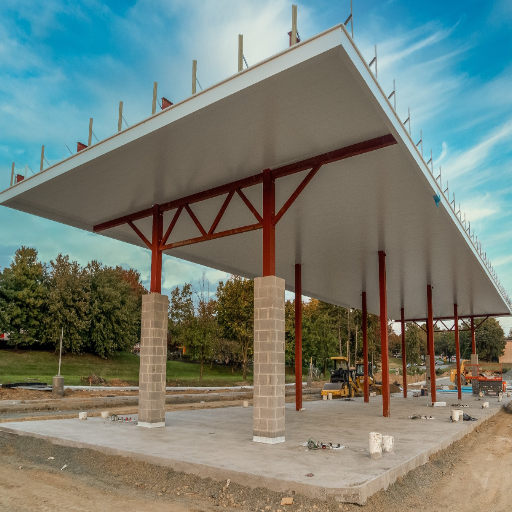
The gas station construction method comprises several essential stages:
Planning and Permits – Site location is selected, and zoning approvals are obtained. All necessary permits have been acquired, including those required for environmental and construction purposes.
Design – Creating design formation with pump stations, underground storage, and convenience facilities, considering safety and building codes.
Site Preparation – Clearing the land, grading it, and providing drainage to keep it free from flooding or contamination.
Tank and Pump Installation – To install underground storage tanks for fuel, along with the necessary pumps for dispensing, while adhering to environmental safety laws.
Utility Setup – Electrical, water, communication, and all other connections are correctly laid out to ensure the station functions optimally.
Construction of Facilities- Any additional construction, such as a convenience shop or restrooms, as per the approved design, shall be erected.
Inspection and Testing- Carry out final inspections and safety tests to comply with all regulations before opening to the public.
Throughout the process, effective project management and adherence to safety protocols are paramount.
Hiring a Construction Company
The construction company you choose will be one of the most critical considerations for your building project. A competent construction company will ensure safety, timely execution, and adherence to budget while respecting the necessary codes during construction. Examine the following things when evaluating different companies:
Experience and Specialization: Companies should seek experience in constructing similar types of projects. For instance, such companies must claim expertise in gas station building and must have a strong file of past jobs. Studies show that 85% of construction delays are the result of poor planning or a lack of expertise, hence the need to hire professionals with experience.
License and Certification: Verify that the company holds all necessary permits and complies with local building codes and regulations. Also, verify its certifications-a company certified for OSHA safety training must maintain the highest level of workplace safety and the latest regulations.
Reputation and Reviews: Evaluate the company’s reputation by reviewing various client testimonials, case studies, and third-party evaluations. Statistics indicate that 92% of people consider recommendations and online reviews when deciding on a business, making them a very reliable way to assess performance.
Cost Transparency: Obtain a clear list of costs before signing any contracts. A reputable company provides a transparent proposal that lists all materials and labor, equipment, and other charges to avoid disputes during the project.
Technology and Innovation: Modern technologies, such as Building Information Modeling (BIM) and automated project tracking and monitoring tools, promise more efficient and accurate results. It is reported that companies practicing construction technology experience a 60% decrease in time deviations during project completion.
Insurance Coverage: Ensure that the company is adequately insured, including liability insurance and workers’ compensation insurance, to protect all parties involved in the event of an accident.
By judiciously considering these criteria and undertaking thorough due diligence, you can mitigate risk while ensuring the success of your construction project. A top-tier construction company that you choose wisely is your partner in metamorphosing plans into reality.
Obtaining Permits and Licenses
Permits and licenses necessary for the construction process must be secured to ensure that the undertaking complies with local laws and ordinances. Permits may be required for zoning, building, electrical work, plumbing, and environmental considerations, depending on the scope and location of the work. For example, the majority of residential projects require a building permit to ensure that the structure complies with safety codes and standards.
Industry production data from recent years has revealed that improperly securing permits can lead to fines, delays in the project, or even the requirement to demolish completed work. Additionally, some experts claim that, on average, construction delays resulting from permitting issues increase project durations by 20-30% over the initially planned duration. Furthermore, some areas may require contractors or subcontractors to obtain special licenses to demonstrate their skills in various fields.
It is essential to conduct due diligence with the local building authorities or hire professional permit expeditors to overcome any obstacles. Professionals can assist with evaluating the exact permits that might be required while submitting the proper documentation, such as blueprints, specifications, and proofs of compliance. All these, when taken with care, help eliminate chances of legal hassles arising in the future and keep things moving smoothly in the project phase.
Working with a Gas Station Contractor
Partnering with a specialized gas station contractor assures a smooth construction or renovation phase for a gas station facility. Experienced contractors are familiar with industry regulations, environmental standards, and technical specifications necessary for petroleum projects. Such dependable contractors will see that compliance with Environmental Protection Agency-level (EPA) requirements is implemented in all undertakings, from underground storage tank management to spill control and vapor recovery systems.
Data suggest that the construction of gas stations can have wildly varying costs, ranging from $250,000 to over $2 million, depending on factors such as size, location, and the type of amenities offered. Contractors handle cost control through efficient procurement of materials, leveraging their supplier network, and fast-tracking construction timelines. They also help with site analysis to ensure proper traffic flow, competitive positioning, and compliance with zoning laws and safety codes.
Historically, advanced technology integration in gas stations has included EV charging stations, contactless payment systems, and energy-efficient lighting. An experienced contractor will ensure that these modern facilities are integrated seamlessly to meet the needs of contemporary consumers and enhance operational efficiency. Open communication, combined with continuous updates and detailed planning, alongside a qualified contractor, will ensure the success and longevity of the gas station business.
Franchise vs. Independent Gas Stations

The operation of franchise gas stations versus independent gas stations follows different principles, each with its advantages and disadvantages. Franchise gas stations bring with them the allure of brand recognition, as well as some support from their corporate parent. They may employ various marketing methods to maintain a steady stream of customers through the station. The criteria for operating these stations are pretty stringent, and franchisees must pay an initial fee, along with periodic payments. Independent gas stations have more flexibility in decision-making and could have a greater return on investment. They, however, require building a customer base and managing the station themselves without any assistance. The choice depends on what the owner wants, the resources they have, and their level of personal experience in conducting business.
Benefits of Franchising
A franchise, being a proven way to make a business succeed, would attract an enterprising individual seeking a clear path to success. In addition, one of the most significant advantages of buying a franchise is the brand awareness it provides. Buying a franchise with an established name sells itself because the name is already recognized by the public, thus saving marketing dollars that an independent business would have had to spend. Specific literature even claims higher survival rates for franchises, with some studies revealing that over 90% of franchised businesses survive beyond five years. In contrast, only about 50% of independent companies can achieve this feat.
The franchisor provides its franchisees with street-level training and support, thereby equipping them with the necessary tools to work smoothly. These may include marketing methods, staff training, and partnering with suppliers, which greatly ease the challenges of starting and running a business. A few franchisees, however, also earn more profits or marginally reduce supply chain costs through some bulk purchases through their parent entity.
The factor that endows franchises with great appeal is exposure to an immediate clientele. For instance, fast-food and convenience store franchise outlets attract customers due to their famous products and reputed quality bearing their trademarks. Furthermore, these franchise avenues offer a scalable business model, allowing franchisees to expand with additional investments in new locations, thereby providing insights into greater financial growth and an expanded business footprint.
Challenges of Opening an Independent Station
Launching an independent station presents a unique set of challenges that require strategic thinking and planning. Brand equity is probably the biggest hurdle, as the independent stations have to build it from scratch. Franchises, on the other hand, can rely on an established clientele, along with national-level marketing. Independents must pour advertising money and time into gaining customers and building relationships within their communities. This could very well be a prolonged and expensive process. Initial marketing costs can range from $5,000 to $20,000, depending on the market size and level of competition.
Supply chain logistics is one of the most challenging issues for businesses. Without a large franchise behind it, an independent operator may have to pay a higher fuel price, as it cannot negotiate better deals with suppliers. Increased costs eat into the net profit, especially in highly competitive areas, and where price sensitivity toward consumers is greater. Even sourcing good suppliers and negotiating contracts can take up valuable time away from a new business owner.
The operating costs of an independent gas station are higher. Business owners must invest in infrastructure, such as fuel pumps, storage tanks, and upgrading the convenience store, which can cost hundreds of thousands of dollars. One must also consider the maintenance, as well as the costs associated with compliance with environmental regulations, such as leak detection and safety standards, which are ongoing expenses that should be factored into the cost of doing business.
At last, competition from established chains poses another perennial challenge. Larger franchises benefit from economies of scale and can therefore price fuel below that of independent stations, while also offering a broad selection of products in their convenience stores. Independent stations will need to find alternative value offerings, such as selling a niche service or delivering superior customer service through a loyalty program. All of these require resources.
Nevertheless, some independent station proprietors succeed by employing unique branding, targeting underserved locales, and developing solid relationships with their communities. However, profitability requires resilience, innovation, and a clear business plan.
Choosing the Right Brand
A crucial decision for an independent station seeking long-term success is choosing the right brand. Most fuel brands provide the entire facility and support system to independent stations, including marketing resources, supply chain management, and brand awareness that will attract loyal customers. Recent industry data suggest that a major fuel brand partnership tends to result in higher sales for the fuel stations, as the brand’s reputation is powerful in terms of quality and reliability. For example, branded fuel stations may see 23% more sales by volume compared to unbranded competitors because local consumers trust premium fuel and associate it with good signage.
Conversely, operating independently as a brand allows for price-setting flexibility, marketing freedom, and product variety. This pathway can be advantageous when operating in a specialized market or underserved area, where customization and localized branding elicit a community response. The prospective owner should be able to decide by evaluating factors such as location demographics, traffic patterns, competition in the area, available branding partnerships, incentive programs, or start-up support from larger companies, as these might serve as low-cost options and help position the station for success.
Incorporating Convenience Stores
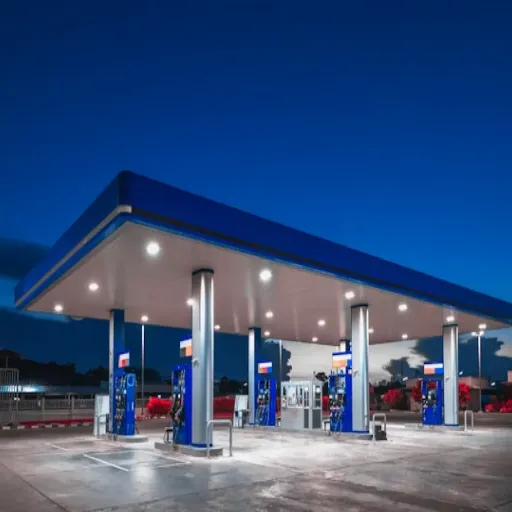
Incorporating a convenience store into a filling station can lead to higher profits and increased customer satisfaction. Convenience stores enable customers to grab quick snacks, beverages, or even essentials during their travels, thereby intentionally extending the duration of their stops and increasing their spending. Focus on high-turnover goods, clean facilities, and reasonably priced merchandise. In the end, loyalty programs and promotions might prove attractive to customers who will return and evolve into loyal brand adopters.
Benefits of Adding a Convenience Store
Adding a convenience store to a gas station can increase potential revenue streams substantially while also enriching the customer experience. According to a NACS study, nearly 50 percent of gas station investors also check out the convenience store, making it a potentially profitable investment. In addition to generating revenue from selling gas, convenience stores offer a wide range of high-margin items, including snacks, drinks, and basic groceries. These also hinder accidental purchases, which account for many sales.
Another significant advantage is the increased dwell time of consumers, which, in turn, potentially augments fuel sales and other add-ons. Promotions within the store, for example, offering a discounted coffee price with the purchase of fuel, can thus encourage bundled spending. Convenience stores also prove to be a blessing to communities, as they provide daily necessities such as over-the-counter medicines, household cleaning products, and even ready-to-eat meals, filling the gap left by the absence of supermarkets. Modern technology, ranging from mobile payments to self-checkout kiosks and digital loyalty programs, also aims to enhance customer experience and operational efficiency.
Convenience stores attached to gas stations are among the more profitable ventures in the retail trade. Market statistics indicate that American convenience stores are expected to achieve annual sales of more than $250 billion. This in itself means that these stores bear promising possibilities as an increasing source of revenue in the future, and when strategically managed and stocked. A convenience store, therefore, serves as a stepping stone for generating more revenue for the business, while also providing a small service that meets the customer’s satisfaction.
Design Considerations
About gas station convenience stores, my primary objective would be to design the layout in a manner that ensures maximum functionality and customer satisfaction. I would focus my attention on intuitive navigation, including clear and discerning signage and product placement, to facilitate a smooth flow through the space. Bringing modern aesthetics into play, the store should feature well-lit areas with clean, deep shelves; it needs to be an inviting environment. I also believe that offering the best-selling items in the market and ensuring sufficient space around checkouts for comfort and efficiency would be the next most crucial considerations.
Marketing Strategies for Convenience Stores
When creating marketing plans for convenience stores, it is essential first to understand the consumer’s behavior and then align with a data-driven marketing mindset. In any case, it seems that convenience stores thrive by offering personalized experiences to their customers. For instance, 80% of consumers report being more inclined to purchase if they receive customized recommendations or promotions. When used effectively, loyalty programs combined with mobile apps that track customer preferences can significantly enhance customer engagement and encourage repeat visits.
Besides, integrating online and offline means has proved to be somewhat effective. Approximately 58% of shoppers prefer combinations that include curbside pickup, delivery, and the option to purchase items in-store. To maximize this opportunity, stores must embark on an e-commerce journey, promoting their business through digital ads and social media campaigns. Such platforms attract a bigger crowd and bring more foot traffic through stores. It would be great if stores promoted limited-time, lucrative offers or meal deals on these platforms.
Finally, the importance for the consumer remains that the production is sustainable and health-conscious. Over 60% of shoppers’ errors occurred during the generation process. Please try again or contact our support team if the issue persists.
Reference Sources
1. Sustainable Development as the Imperative of the Twenty-First Century
2. Selection of Charging Station Location Based on Sustainability Perspective Using AHP Method
3. Toyota as an Environmental Model City
Frequently Asked Questions (FAQs)
What are the steps to build a new gas station?
To build a new gas station, you must first research the business requirements of your respective state, including obtaining the necessary permits and licenses. Next, secure financing options and select a suitable location that meets local zoning regulations. After that, you’ll need to hire an architect and a construction company to design and construct the service station building, including pumps and tanks.
How can gas station owners renovate their existing stations?
Gas station owners can renovate their existing stations by assessing the current state of the property and determining which aspects need improvement. This may include upgrading the canopy, enhancing the car wash area, or optimizing the convenience store (c-store) layout to increase sales of consumer goods. It’s essential to adhere to local zoning regulations and obtain necessary permits during the renovation process.
What are the operating costs involved in running a gas station?
Operating a gas station entails several expenses, including payroll, utility bills, pump and tank maintenance, and inventory for the convenience store. Gas station owners must also consider insurance and property damage coverage, as well as the associated costs of complying with local and environmental regulations.
How do you ensure the success of your gas station?
To ensure the success of your gas station, prioritize location in high-traffic areas, offer competitive pricing, and provide additional revenue streams, such as a car wash or food services. Maintaining a well-stocked c-store and optimizing the customer experience can also significantly contribute to your gas station’s profitability.
What are the typical profit margins for retail gas stations?
Profit margins for retail gas stations can vary widely based on location and market conditions. On average, gas stations tend to have lower profit margins on fuel sales compared to convenience store items. However, by effectively managing costs and maximizing sales of consumer goods, gas station owners can achieve better overall profitability.
What considerations are involved in gas station construction?
Gas station construction requires careful planning around several key factors, including vehicle ingress and egress, the number of gas pumps, and the design of the service station building. It’s essential to work with a gas station contractor who understands local regulations and can navigate the complexities of the construction process.
What financing options are available for starting a gas station?
Starting a gas station may require significant startup costs, and various financing options are available. These can include traditional bank loans, Small Business Administration (SBA) loans, or private investors. Potential gas station owners should prepare a solid business plan that outlines expected revenues and the associated costs.
Can I franchise a gas station brand?
Yes, many well-known brands, such as Shell and Mobil, offer franchise opportunities for aspiring gas station owners. Franchising can provide the advantage of an established brand and support in marketing and operations. However, it’s essential to review the franchise agreement and ensure that it aligns with your business goals.
How do local zoning regulations impact gas station construction?
Local zoning regulations play a crucial role in the construction of gas stations. These regulations specify the location of gas stations, the size of the property, and the types of services that can be offered. It’s essential to research and complies with these regulations to avoid potential legal issues that could delay or halt construction.

